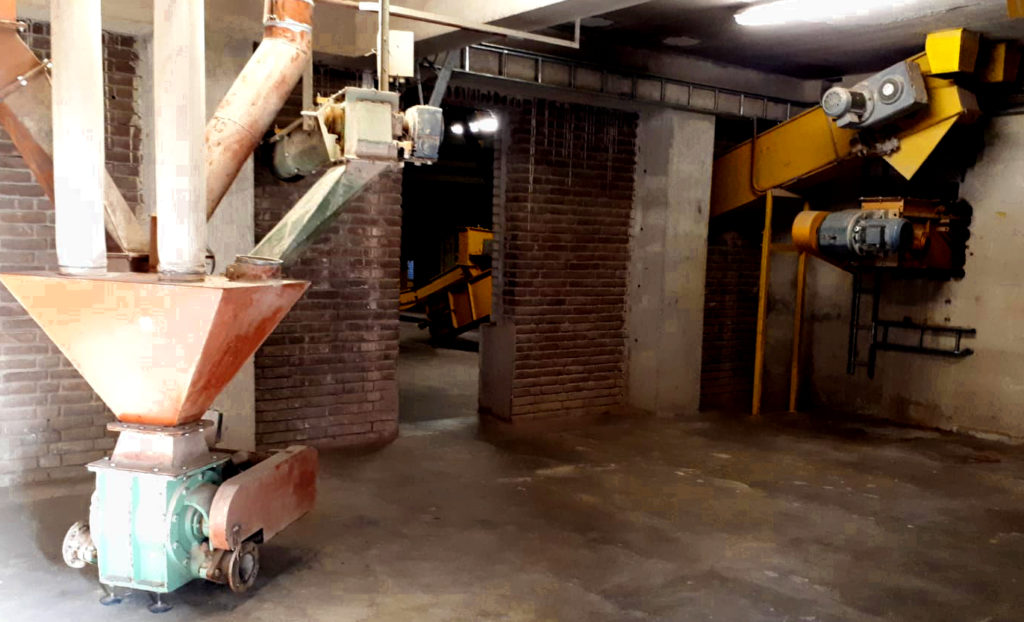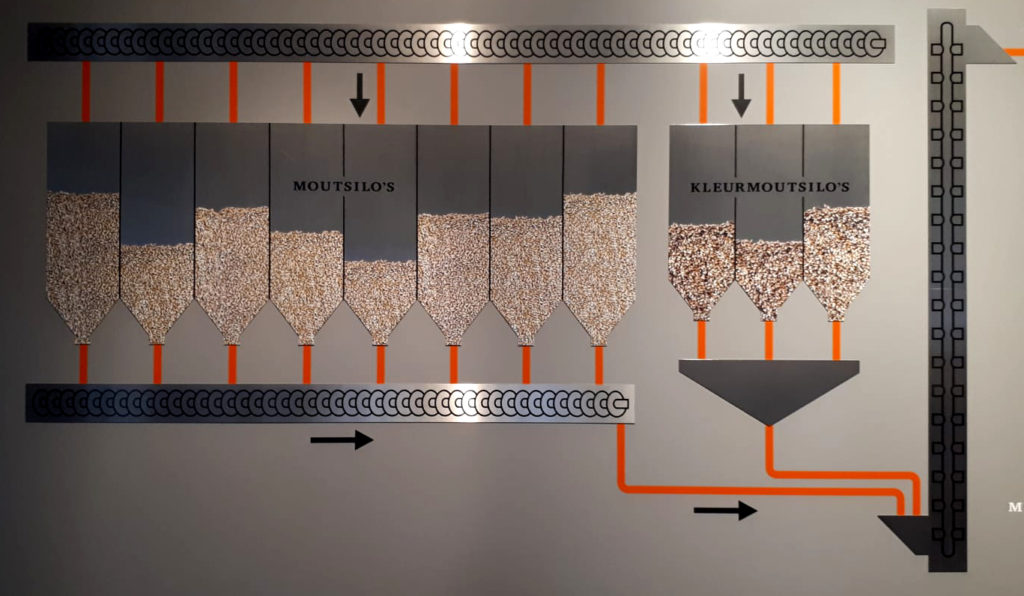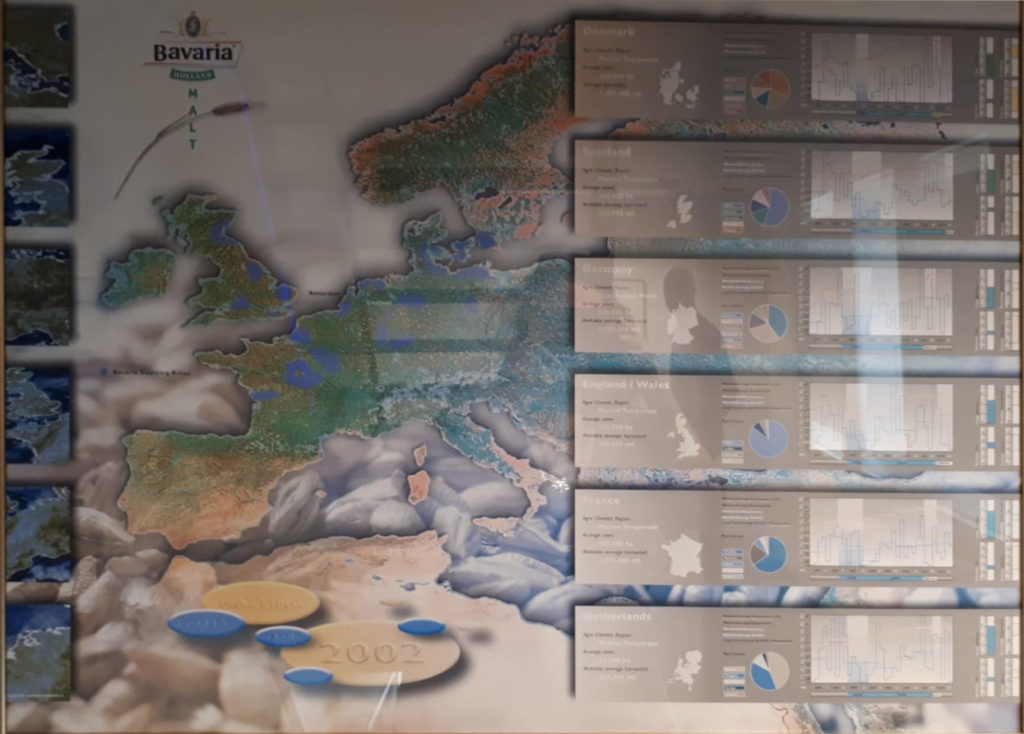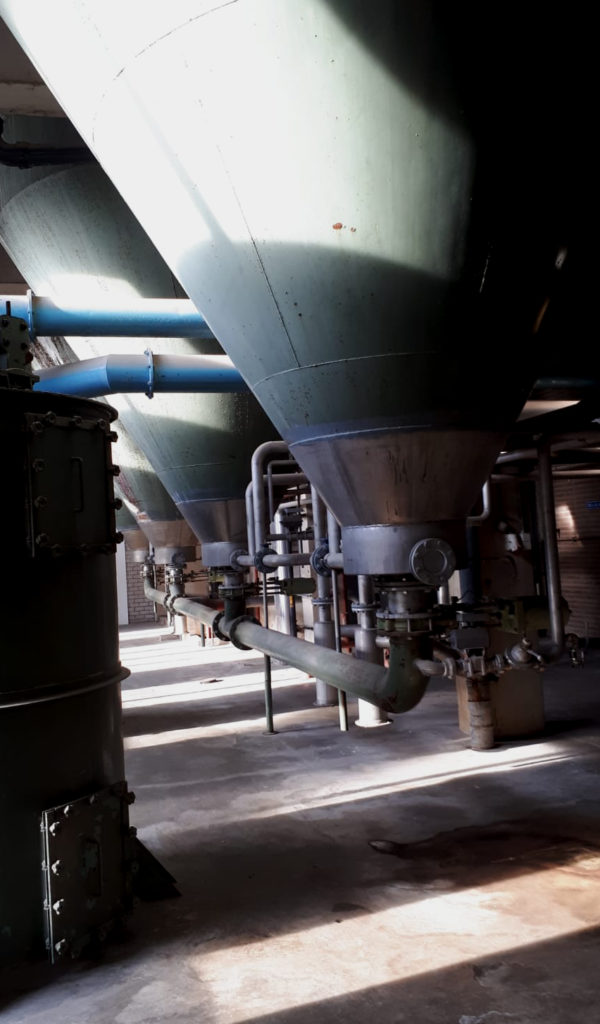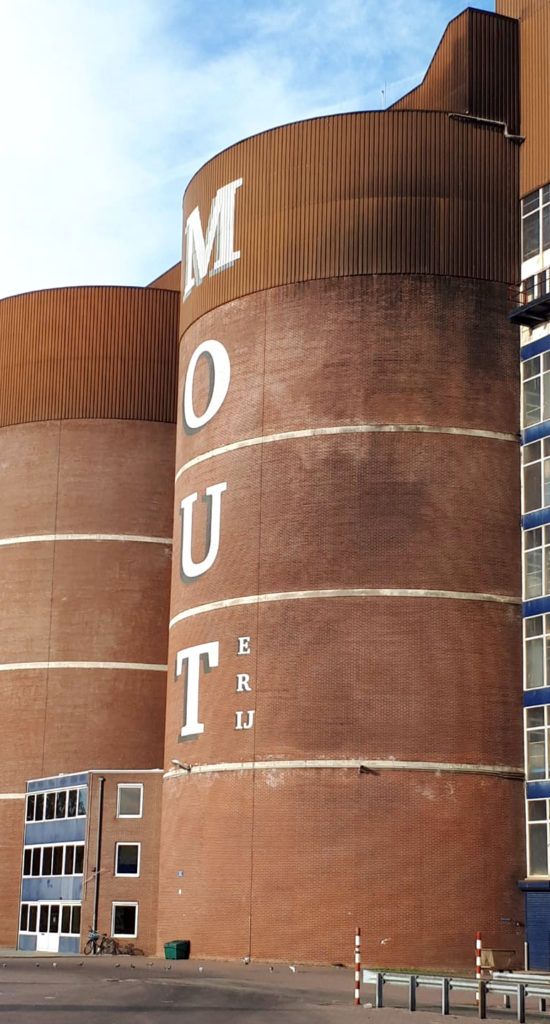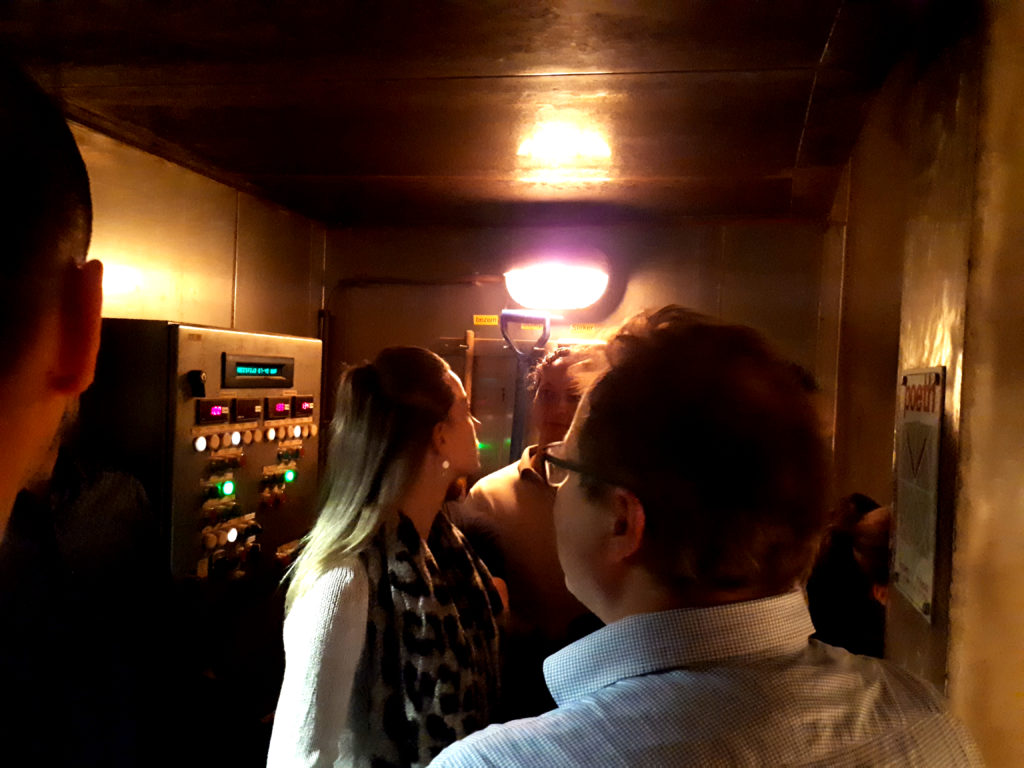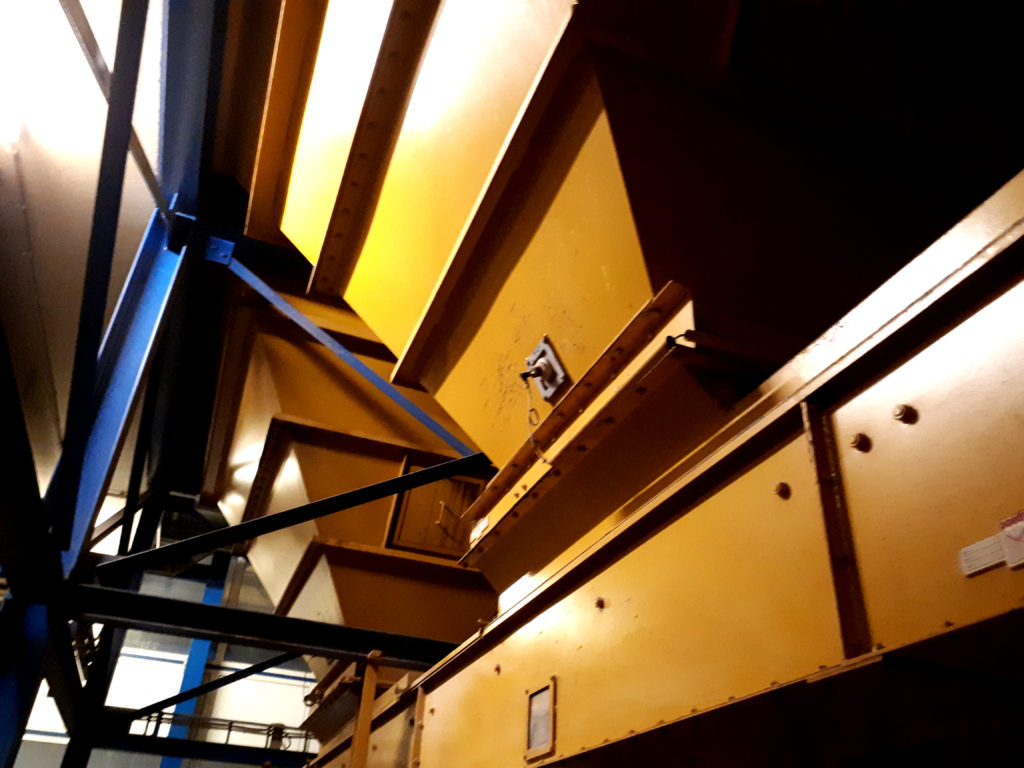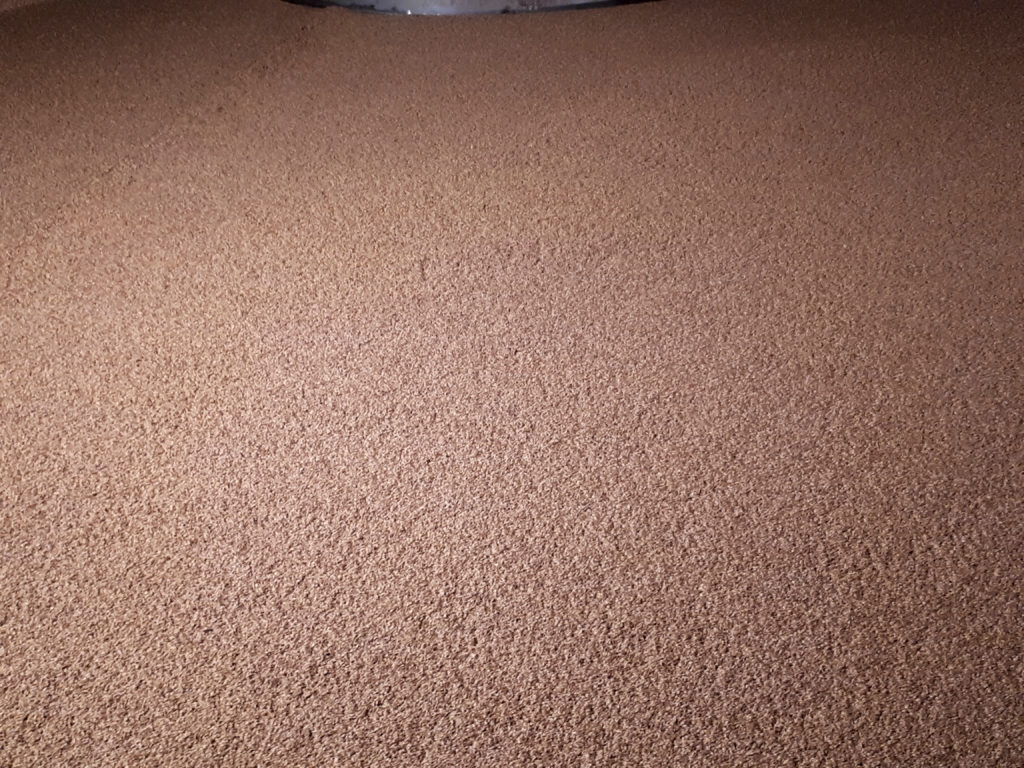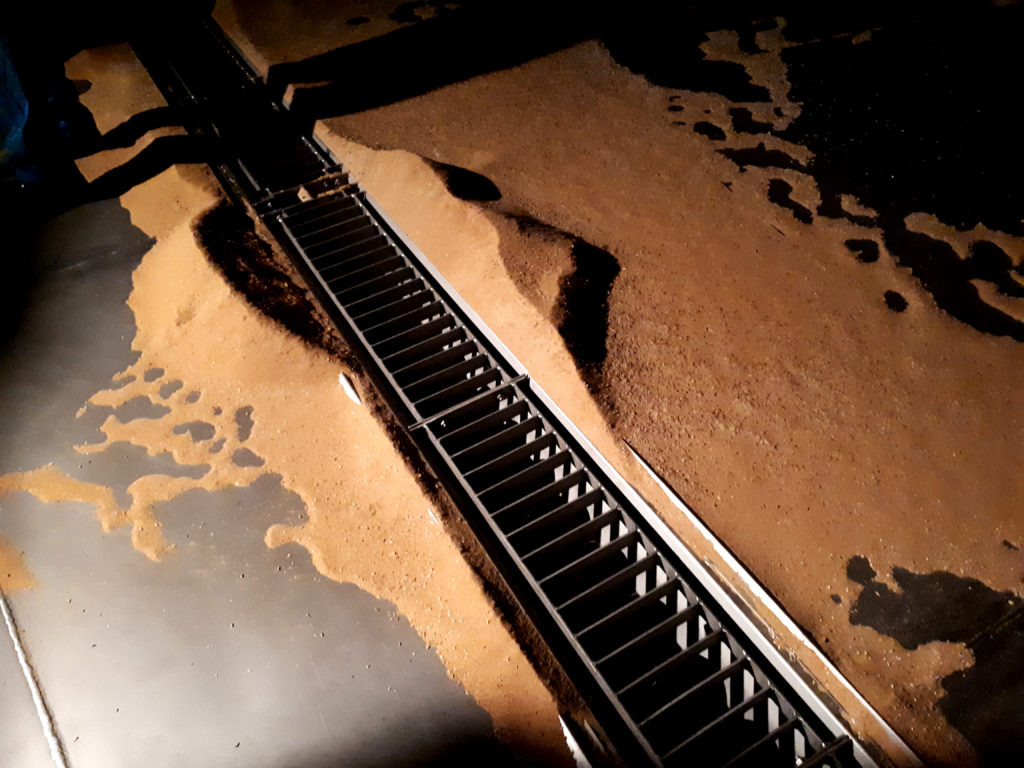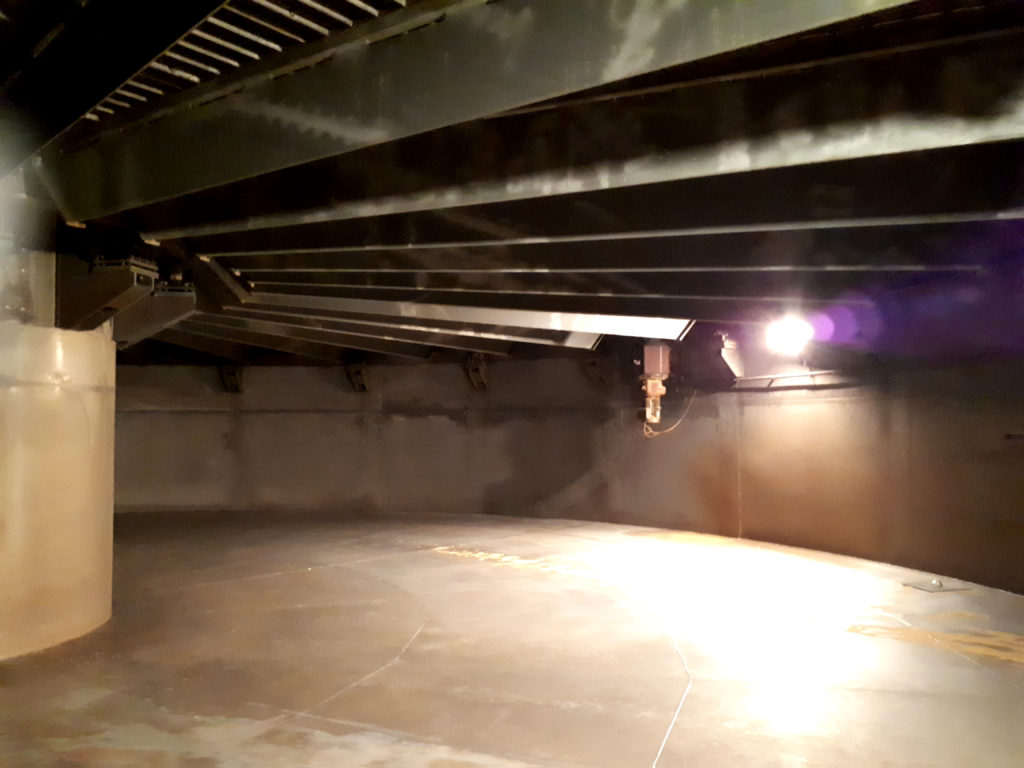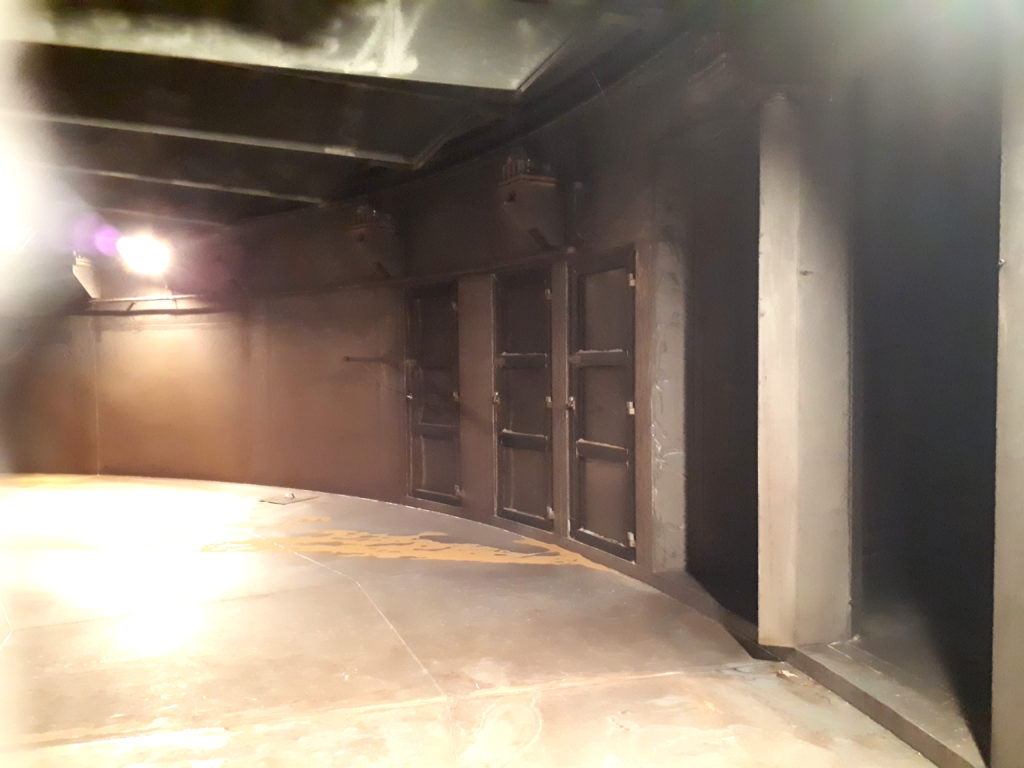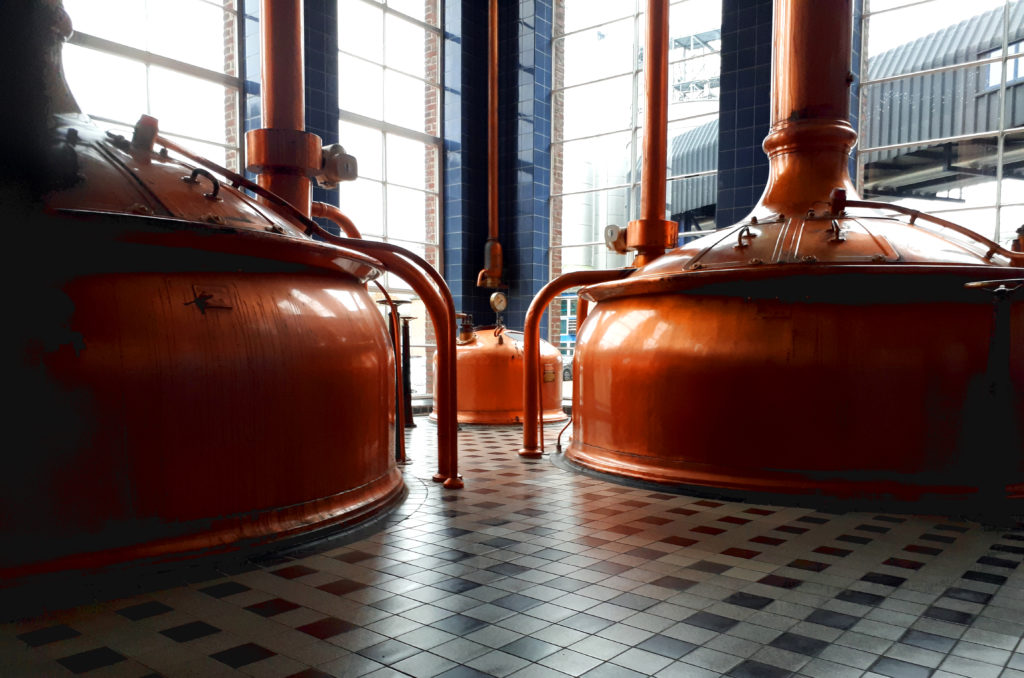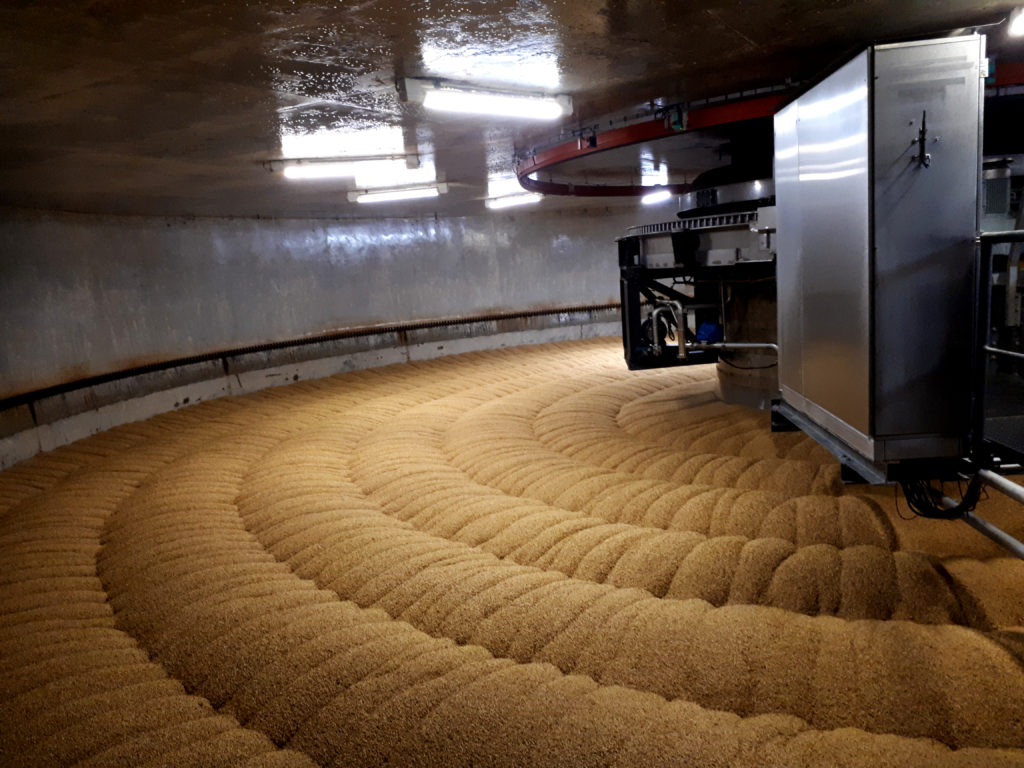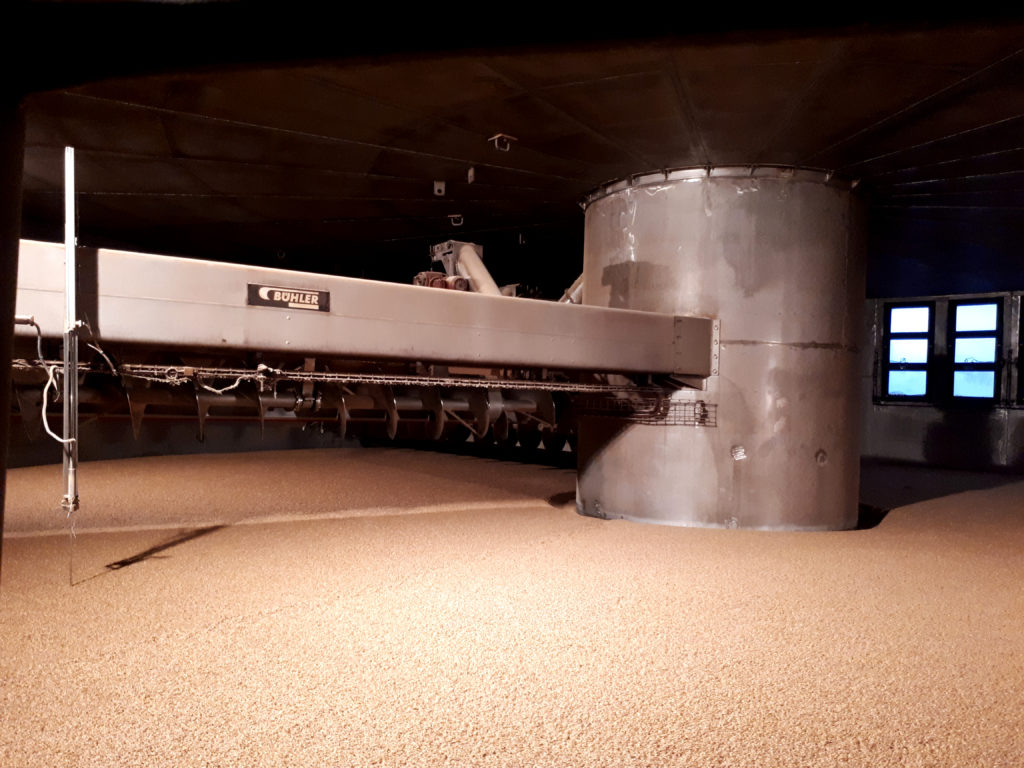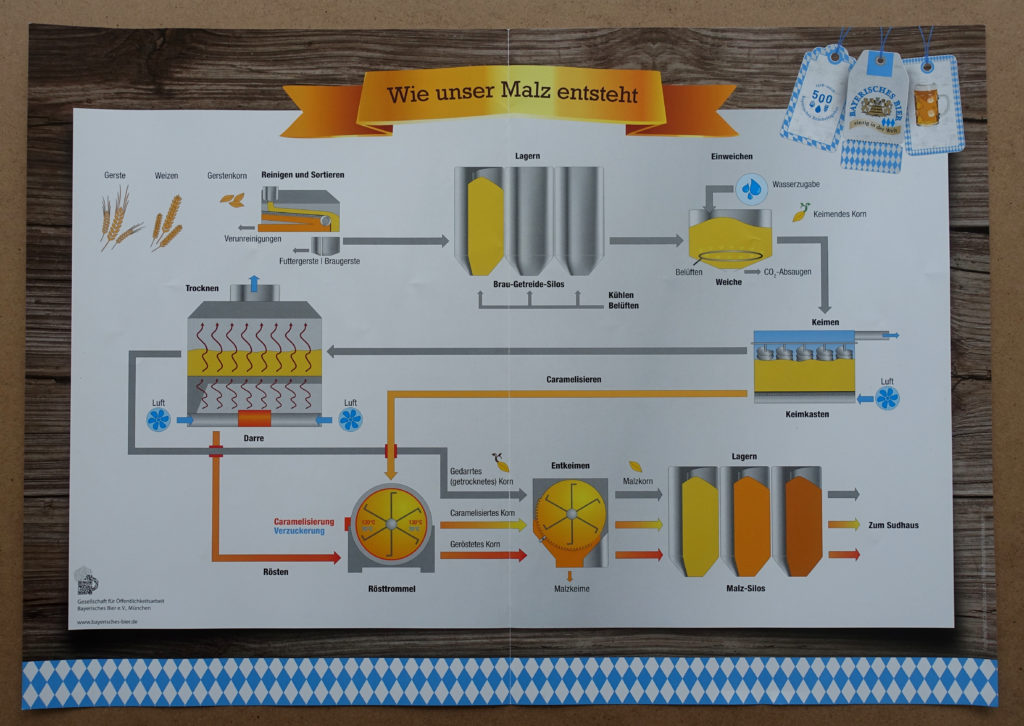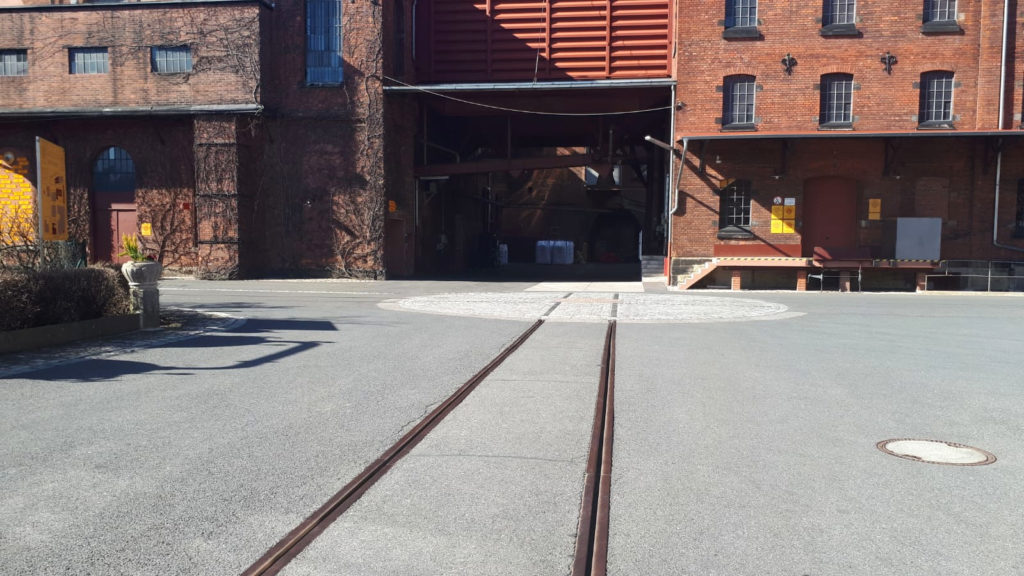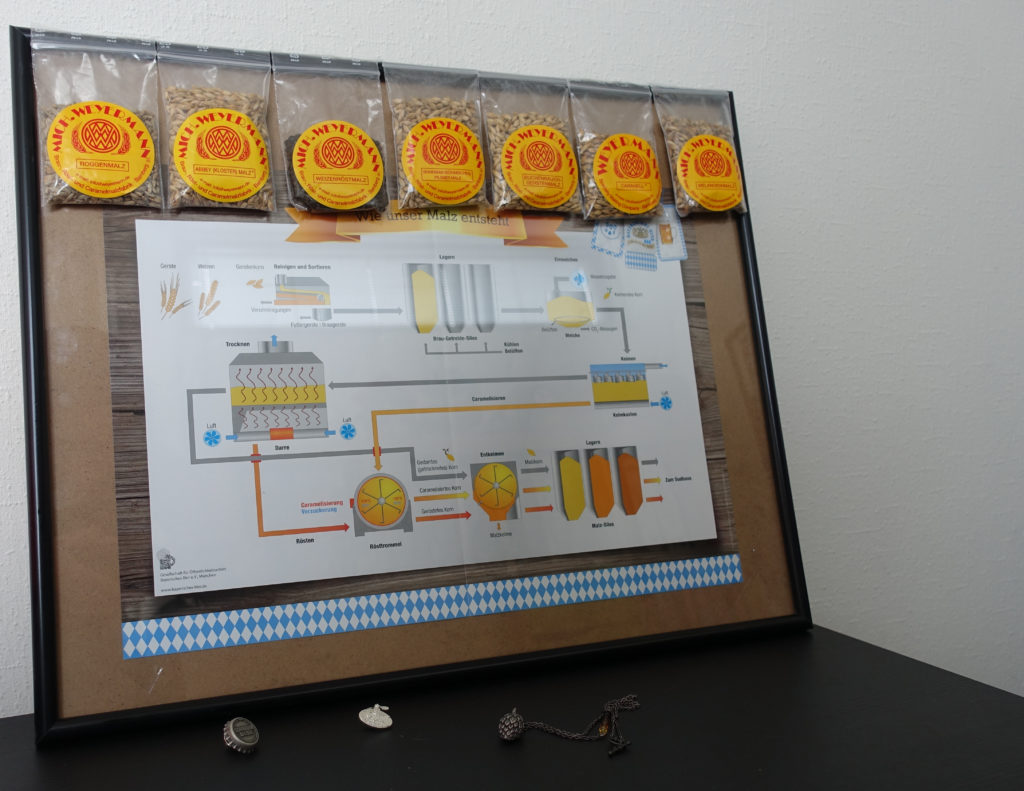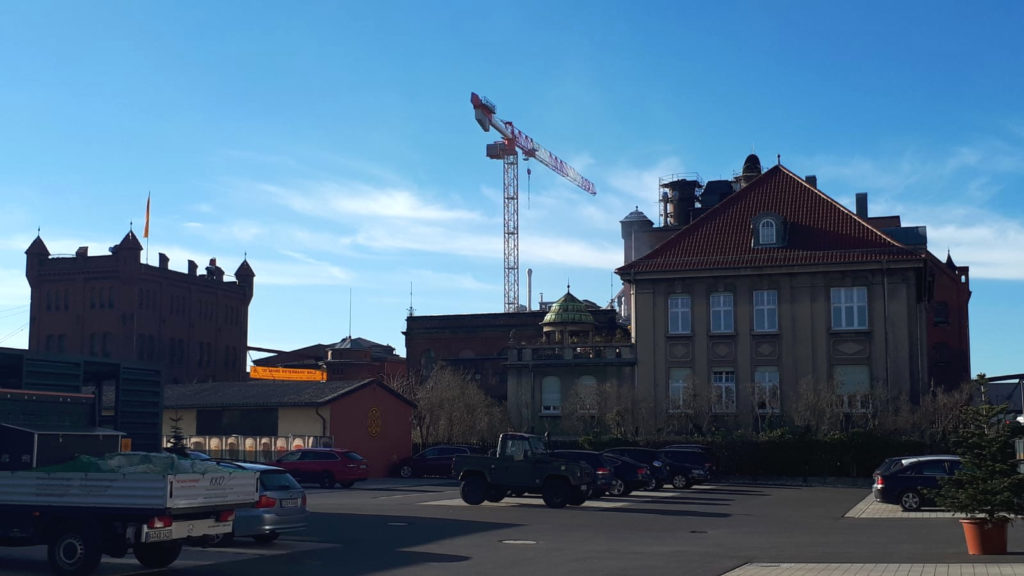Malt. Since you are reading this blog, you probably know something about beer and its present-day main ingredients: water, yeast, hops and malt. But what’s malt?
Not to go too deep into the 1. brewing process, 2. the different grains you can use or 3. into chemistry, basically yeast needs simple sugars to eat to poop alcohol. Those sugars are available in grains, but are connected in bigger chains (starch) than the simple sugars the yeast wants to eat. Luckily, the grains also have the ability to produce the scissors to cut up those chains into the smaller, smiple sugars: enzymes. But to get those enzymes, you need to malt the grains.
When you malt you first steep the grains (stirring to keep the oxygen in), for about 40 hours. Then you let them germinate for 6 days. Not too long, because you don’t want the germ to eat all the starch and all, so you stop it at just the right amount of starch and enzymes by heating the grains: kilning. This happens on different temperatures over different periods of time (drying, coating, curing). After that, you remove the germs and you have malt. To make specialty malts (dark, roasted, caramelised), you can play with that last part: You can heat them on higher temperatures, you can roast them instead of kilning to get caramelised malt, you can kiln them ánd then roast them to get roasted malt, the difference for the last two being the wetness of the grain when they enter the roasting drum.
| Weken Kiemen Eesten Roosteren | Einweichen Keimen Trocknen (Darre) Rösten | Steeping Germination Kilning Roasting |
Malting doesn’t happen a lot in breweries themselves, brewers mostly buy their malts. In the Netherlands there are four big malting houses:
- Cargill B.V., Swalmen
- The Swaen, Kloosterzande
- Holland Malt B.V., Eemshaven and Lieshout
and a few breweries that malt themselves. Probably the biggest malting house in the world for specialty malts is Weyermann in Bamberg, although, the Dutch The Swaen is up and coming.
I visited two malting houses in the last year: Holland Malt in Lieshout, the Netherlands, and Weyermann in Bamberg, Germany. Both malt houses are family businesses, Holland Malt from the Swinkels family (yes, Bavaria) and Weyermann from Weyermann.
You can visit Holland malt in Lieshout in a combined tour with the Bavaria brewery. That’s therewith when someone asks me which brewery in the Netherlands is the most interesting for a tour, I always also recommend Bavaria. It’s interesting not only to see the brewery itself (which, as far as tours go, isn’t that much different from say a Hertog Jan brewery tour), but also the malt houses, which is an unique experience in the Netherlands. At Holland malt they focus mainly on pale malts. During a visit you can see the germination process (Through glass) and mostly feel the heat of the malting. You also get a chance to taste some different malts (malt makes a nice snack by the way) before moving on to the brewery part of the tour. Beware, there are some…! stairs involved. The brewery part of the tour is a bit new style with short films on the different locations, but it’s not an attraction like the Heineken Experience (which is as flashy as their website) or Stiegl.
We had the honour of going behind the scenes. We also visited the kilning room and the heating room below (which was… hot), places you don’t get to see in the normal tour. In the heating room below it was 55 degrees at the time, which seemed extra hot with the high dryness and air pressure of the surroundings. The kilning room was still quite moist, the malt in it was just freshly poured from the germination rooms. But it’s always quite moist and hot in a malting house.
The normal, public tour at Weyermann is a lot more extensive, malt house wise, but you are not allowed to take pictures inside. You start at the shop where you can buy small malt tasting bags, and a LOT of merchandise. They will tell you about the history of Weyermann, how it started with just the one building near the railroad and grew quickly over the years. Then you get a tour through the germination chambers, which you get to enter instead of looking at it through a window. Interesting to note that Holland Malt uses a circling rake while Weyermann uses one that takes laps.
In my opinion The Holland malt way is probably a bit more effective since it evenly stirs all the grain, while at Weyermann the grains at the ends get a quick double stir everytime it changes direction. Although in the circle one there’s probably some difference between the inner circle and outer circle.
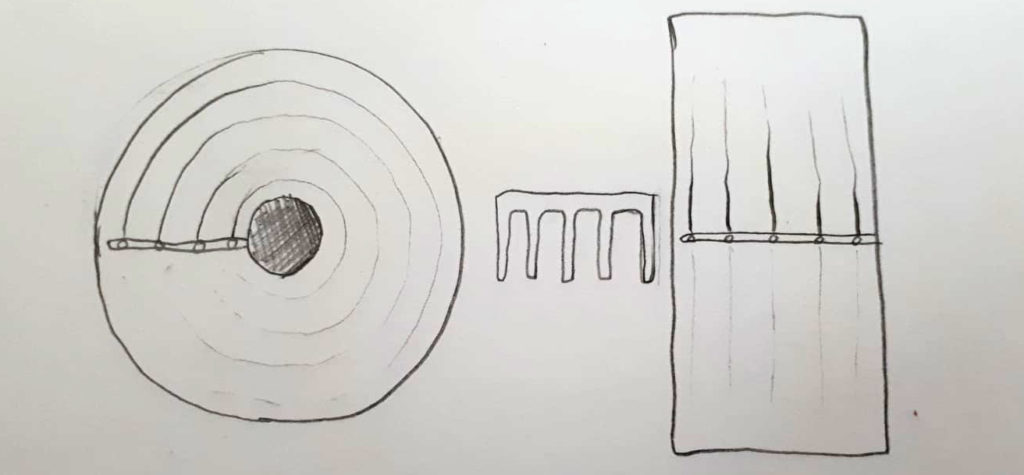
After that you get to see the kilning and roasting chambers. Near the roasting chambers you get to taste almost all kinds of malts they have on offer and that’s a lot! Weyermann is this big, because they also have the roasting drums and therefore have all the specialty malts you can wish for. They like to keep one type of malt a mystery though: the rauchmalt. You don’t get to see that part of the malt house, where the rauchmalt is made. The tour ends with the whole packing and distribution process. Weyermann delivers all around the globe. At the very end of the tour you get to taste some beers they brewed in their own microbrewery.
Both tours give quite some inside in the malting process and with that some extra inside in the process of making beer. For the Dutch people that are looking for a brewery tour, I really recommend that tour at Bavaria. When in Bamberg, be sure to be there on a wednesday to be able to visit Weyermann.
Which beer processing venue will you be visiting next?

